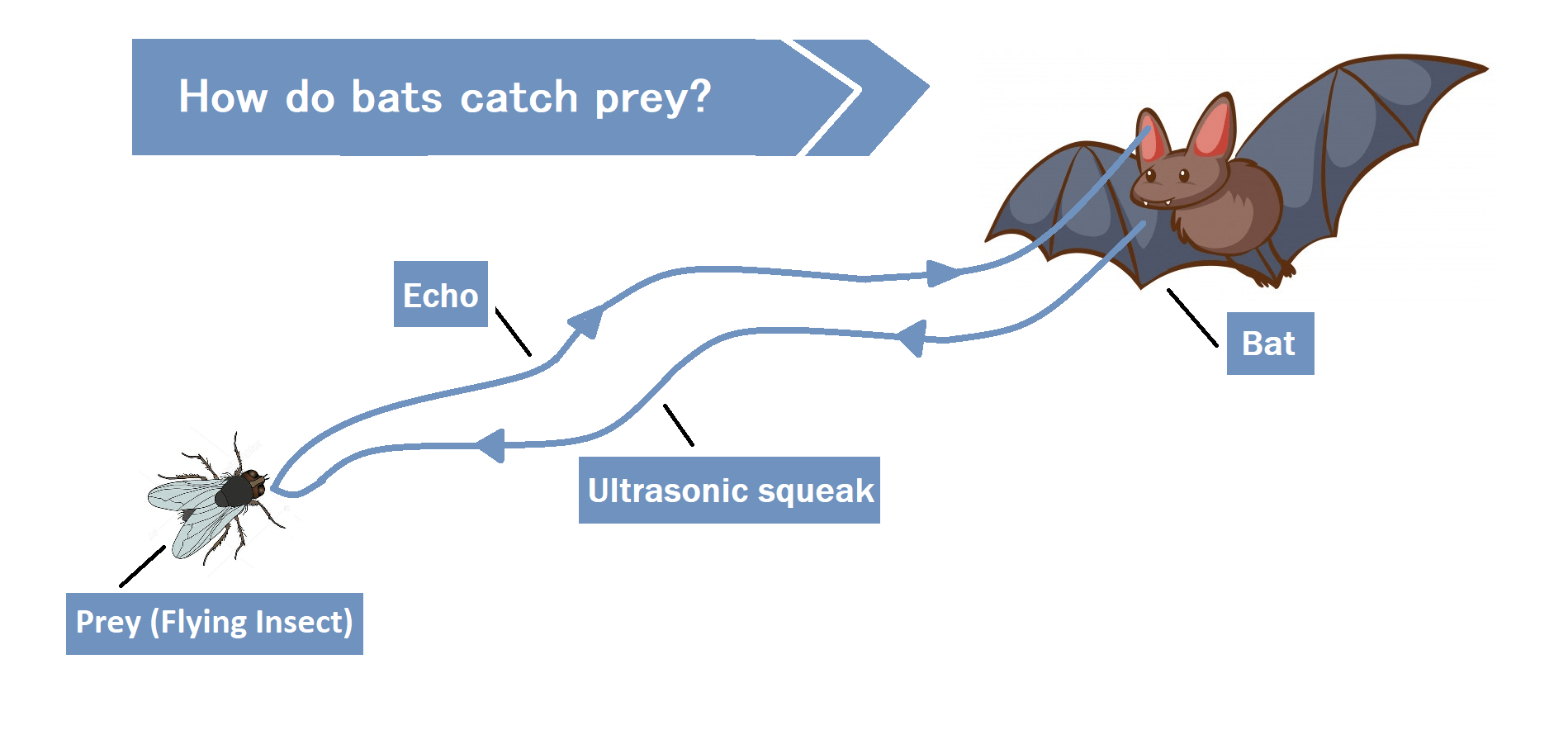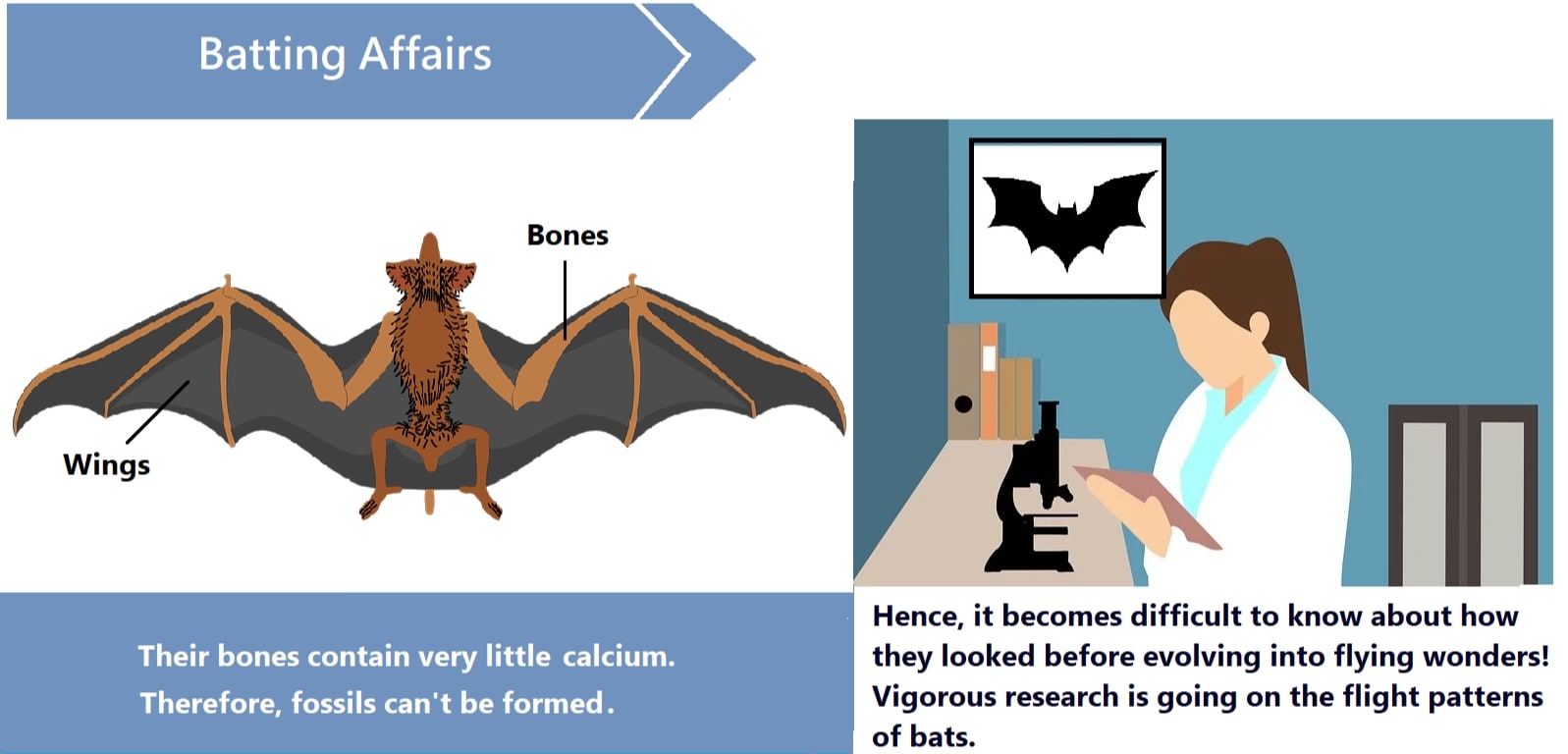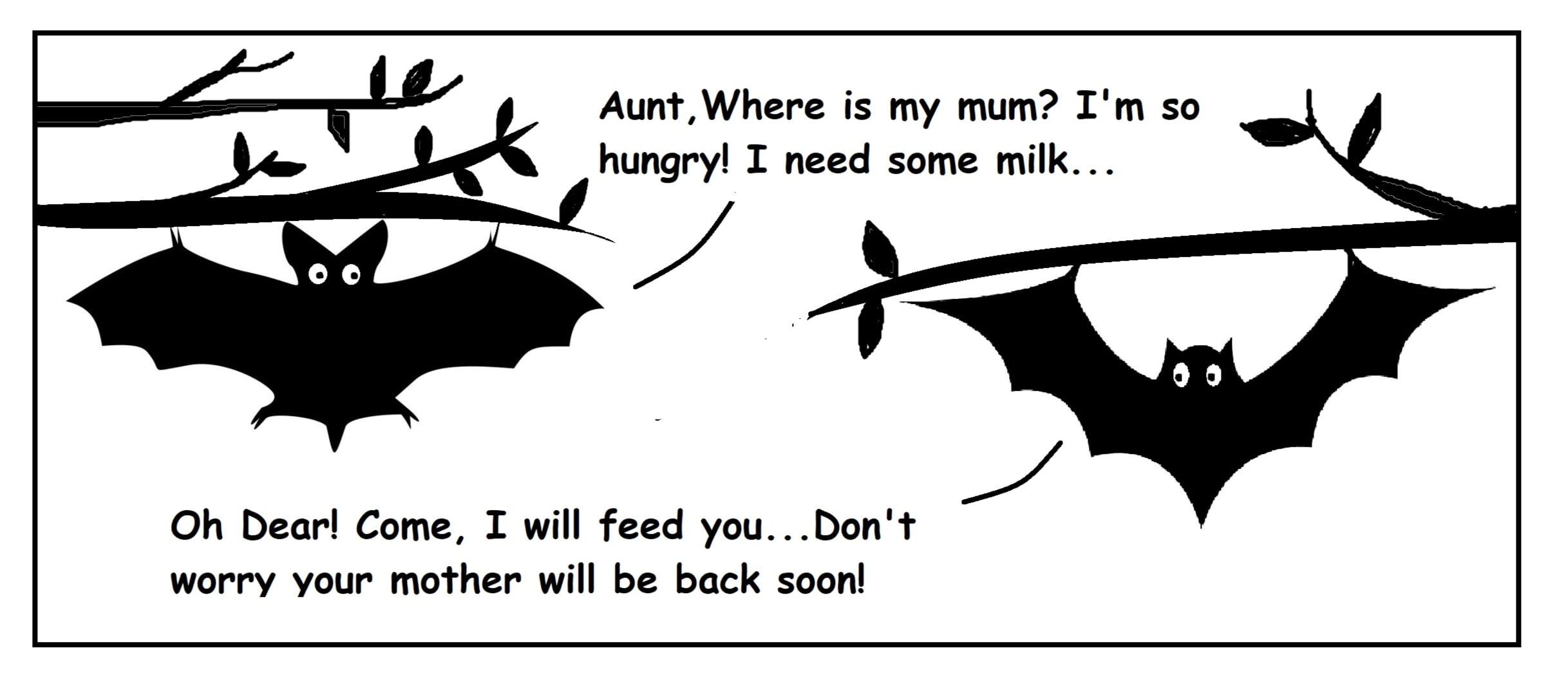Synonymous with witchcraft, devilry, and dark enchantments. Considered by many cultures as unholy and sinister. Bats sure have had a bad rep throughout the world and its many people. Their only redemption point so far has been through the movie and comic series ‘Batman’; in that too the protagonist lives with an acute phobia of the animals for more than half of his life. Too bad. In 2002, these nocturnal animals were implicated in having passed on the SARS-Cov-1 virus to humans and caused the outbreak in China. Not that they are to be blamed for this entirely (for more information, read our article ‘Pathogen Premier League: a Game of Jumps and Ducks’). But this has only intensified the smear campaign against them. Bats, contrary to popular opinion (seldom turns out to be wrong, doesn’t it?), are truly fascinating animals and have some real “superhero” qualities. So, without ‘batting’ an eyelid, let’s look at what makes bats unique.

. . .
Bats are the only known mammals that can fly. This in itself is such a unique quality that it puts bats in a separate league of their own. For this very reason, early civilizations of man called these arboreal
creatures as “liminal beings”, meaning that they had a borderline existence between normal and paranormal. Their nocturnal inclinations, combined with some species being desirous of a “bloody”-diet, were reasons enough to defame them and make them easy targets of early man’s phobias of supernatural events. But as always, science emerges as the hero and tells us otherwise. Most bats are indeed nocturnal. But that is because of their ability to echolocate objects. This means, that not only can they detect visible light with their eyes (yes, they can! Surprise, surprise?), they can also locate objects by detecting the sound waves that bounce off of them! The reason they are nocturnal then becomes pretty clear: nighttime would provide them ample opportunities to hunt for prey, without the distraction of visible light obstructing their “vision”. We cannot hear the sound produced by these creatures because they emit it in frequencies well above 14,000 Hz, which falls under the category of ultrasound. After reading this, I feel Sonic Hedgehog should be renamed Sonic Chiroptera (the scientific name of the order of bats)!

Now, coming to the crux of the matter: why do bats take to the skies? As we know, mammals are homeotherms, meaning that they are capable of regulating their internal body temperatures regardless of their surroundings. This is the probable reason for the success of mammals across landscapes on Earth. Yet, until recently, scientists had no answer to the question of bats flying for a singular reason: flight requires an animal to change its internal temperature and metabolism to match the amount of energy required to fly and stay airborne for a reasonable amount of time. How then, would bats, long classified as mammals, do this? Turns out, bats are found to change their internal temperature and metabolism according to their surroundings, despite being mammals! Liminal indeed!
As for the reason as to why bats took to the skies and evolved, we currently have no answers. This again is attributable to another unique property of bats: their bones contain very little calcium. This means that there cannot be fossils formed and hence we can’t really know how these animals looked like before evolving into the flying wonders they are today. Vigorous research is ongoing on the flight patterns of bats, and they have already been proclaimed better fliers than birds and even insects. Unlike its contenders, a bat can actually bend and twist its wings in whichever way it wants, because of its unique bone and wing structure, which is very flexible and jointed.

Fascinated as one maybe by its unique ability to fly, a bat’s flight is not at all advantageous to humans and here’s why.
Bats fly at extremely high speeds (close to 100 mph), and their internal body temperature is elevated to 40 degrees Celsius during flight. This exception to homeothermy has a much larger consequence; according to latest research, bats can’t get infected by viruses that can’t tolerate such high temperatures. Bats also possess a unique immunological pathway, called the STING-interferon pathway, that prevents them from getting infected by the viruses (interestingly, the activation of this pathway in humans is associated with severe autoimmunological disorders!). This joint antiviral mechanism has been speculated to have developed in response to protecting the bat’s genome from getting damaged due to the huge energy losses it sustains during flight. This defence mechanism gives bats protection unseen in any other mammal alive today. This is the reason why bats tend to be the carriers of so many zoonotic pathogens, many of which infect humans with a high mortality rate. Estimates put the number of viruses a single bat can carry up to 60 and this includes the Marburg, Nipah, Ebola, Hendra, and rabies virus. The discovery of these protection mechanisms has triggered scientists all over the world to study bats as ideal species in immunological, biochemical, and biophysical studies.
Bats are wondrous creatures for many more reasons. People often misunderstand bats to be blood-sucking parasites, that are of no special consequence to an ecosystem. But what many don’t know is that most bat species are in fact frugivores! They rely on a fruit-pollen-nectar diet and undertake flights of large distances in search of their meal. This leads them to become one of the largest groups (up to 1400 bat species are frugivorous) of animal pollinators of plants. Thus, they are of high ecological value to all terrestrial ecosystems. They also act as pest consumers and can potentially save the bucks spent on pesticides. Due to their unique defence mechanisms, bats are also one of the few animal species blessed with the longevity of life. Thus, only a long-lived bat can prove advantageous to the health of an ecosystem.
Bats are highly gregarious animals. They roost in colonies and nurture their young together. This increases the risk of passing on all those pathogens to each other. When humans come in contact with them, viral jumps are bound to happen. But does this make bats the villain of our story here? Definitely not! Here is where the real trouble starts though: humans are fast encroaching upon areas populated with bat colonies, which is putting the world at constant risk of repeating history and witnessing another outbreak like the SARS one, or the recent and much worse COVID-19 pandemic. Large habitat loss is putting these creatures at risk of extinction. Their incessant killing by humans is like putting a foreboding death sentence on our own heads. Bruce Wayne will certainly not be happy!

All in all, we can see that bats aren’t that sinister. I’d call them pretty humble for keeping it so low key despite their prowess in so many areas. Ill-informed rumours and myths have long kept the bats from receiving the true recognition they deserve. It’s time we cut them some slack and help spread awareness about their various ‘superpowers’!
. . .
Writer:

Luminaa Anandh
Co-Founder & Director of Communications
Illustrator:

Yamini Kathuria
An amateur artist and an avid reader, currently pursuing a bachelor’s degree in Psychology at Delhi University. Intrigued by our experiences, from human consciousness to the complexity of nature, she wishes to work in an interdisciplinary area where cognitive science, psychology & neuroscience meet. Her love for connecting & sharing knowledge with others makes her feel happy & content, a reason to work for ‘The Science Paradox’ magazine.

